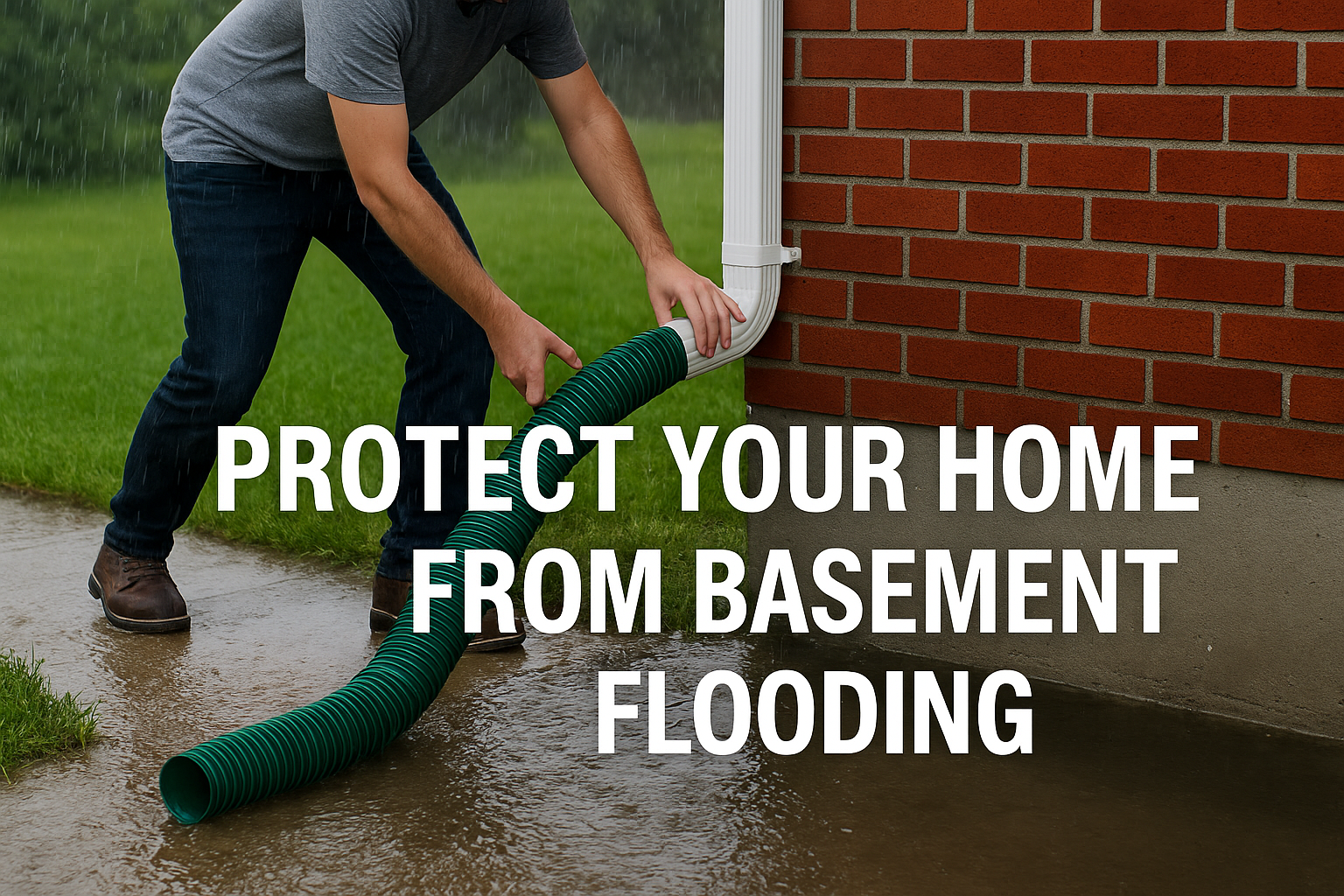Protect Your Home from Basement Flooding
A Practical Guide for Alberta Homeowners
When it comes to homeownership in Alberta, basement flooding isn’t a rare inconvenience—it’s a growing risk. Between heavier rainfall patterns and aging municipal systems, even “dry” neighborhoods can find themselves ankle-deep in trouble.
The good news? Most basement floods are preventable with a few strategic fixes and a little maintenance.
Why Flood Prevention Matters More Than Ever
The Institute for Catastrophic Loss Reduction (ICLR) has tracked disaster losses doubling every 5–7 years since the 1960s. Floods are now among the most frequent and costly natural disasters in Canada. According to the Insurance Bureau of Canada (IBC), the average cost of a flooded basement claim now exceeds $40,000—and overland flood damage isn’t always covered under standard home policies.
Quick, Free Fixes That Actually Work
You don’t need an engineering degree to lower your flood risk. Start with these simple steps:
Keep storm drains clear: Remove leaves, debris, and ice from grates near your property.
Clean eavestroughs and downspouts annually: Blocked gutters are one of the most common causes of basement water intrusion.
Direct downspouts away from your foundation: Use extensions and splash pads to move water at least 6 feet away from your home.
Avoid pouring fats, oils, and grease down drains: These clog pipes and can back up into your basement.
Store valuables upstairs: Sentimental items and electronics don’t stand a chance against an inch of water.
If your basement has flooded before, these are just the warm-up exercises—you’ll need a more permanent defense.
Professional Upgrades That Pay Off
1. Get a Plumbing Inspection
A licensed plumber can identify vulnerabilities like aging sewer laterals, missing foundation drains, or illegal downspout connections. Many municipalities even offer subsidies for sump-pumps and backwater valves—so check with your local public works department before you start digging.
2. Install or Maintain a Sump-Pump
Your sump-pump moves water away from your foundation. Test it yearly by pouring water into the pit to make sure it starts automatically.
Add a battery or generator backup—power failures tend to arrive hand-in-hand with major storms.
3. Add a Backwater Valve
Installed in the main sewer line, this small device stops sewage from flowing back into your home during heavy rain events.
It may even lower your premiums.
4. Check Your Lot Grading
The ground should slope away from your foundation—roughly 10–15 cm higher next to your wall than 1.5 meters out.
Settled soil or poor grading channels rainwater straight to your basement.
5. Inspect Sewer Laterals
These underground pipes connect your home to the municipal sewer. Over time, they can clog with tree roots or grease, increasing flood risk.
A quick camera inspection can save you a surprise renovation bill.
The Hidden Risks You Can’t See
Floodwater isn’t just inconvenient—it’s toxic. It can contain sewage, chemicals, and bacteria, and even after drying out, the residual moisture often breeds mold. The Public Health Agency of Canada warns that indoor mold growth can trigger respiratory issues, allergies, and chronic asthma in children and seniors.
So when your insurance broker nags you about adding sewer backup or overland water coverage—it’s not just sales talk. It’s smart risk management.

